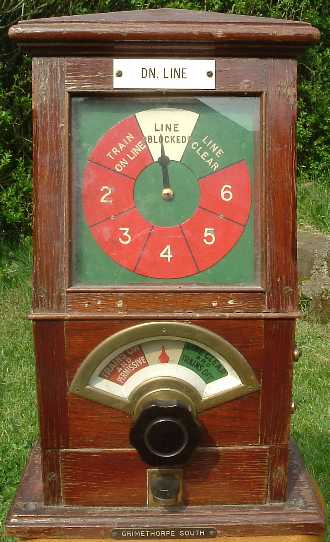about the railway pages
Railways formed one of my childhood interests, and my present interest is in large part a nostalgic look back at the lines I knew then, but which have now disappeared.
My grandparents lived at Darfield, just east of Barnsley and childhood rambles acquainted me with very different railway lines. The nearest - within view of the house - was the ex-Midland main line. Proceeding a bit further beyond the Midland, we encountered the Dearne Valley Railway. This line had been built in 1902-08 to serve the new collieries along the Dearne Valley; one of these pits was Grimethorpe, where my grandfather had worked. The section we knew best was between the villages of Great and Little Houghton; we never actually saw a train here, and it was not long before the track was lifted, and this part of the route buried forever by the expanding spoil heap from Houghton Main pit. Walking south from Darfield took us to the villages of Wombwell and Wath - and perhaps the most interesting of the railways near Darfield: the electrified line from Wath to Penistone. This route was electrified - along with the Woodhead route from Sheffield to Manchester - in the early 1950's. Coal trains always formed the dominant traffic on this line, and at Wath there was a huge marshalling yard, built by the in 1908 by the Great Central Railway. The last electric workings from Wath yard were in July 1981 and although the line from Wath to Barnsley lingered on for a few more years, it finally went in November 1985. The Woodhead route was popular with enthusiasts - you may wish to visit the Woodhead site. As it turned out, the Midland route through Darfield didn't survive either! The section from Wath to Cudworth has the sad distinction of being about the only portion of the Midland route from St Pancras to Carlisle to have closed completely. My interest in signalling was sparked when I went to an auction wanting to buy a worksplate from the one of the locomotives from the Woodhead route. Said plate went for rather too much money, but I came back from a signal box block bell from the Worsbrough branch as a sort of consolation prize. Having got my bell home, I was of course eager to find out how it was used in the signal box. But between my childhood fascination with trains, and purchasing this bell, I had acquired some experience of electronics. This led to the construction of a microprocessor controlled signal box simulator - you can read about that in these pages.
-
A signalbox block instrument from Grimethorpe North on the ex-Dearne Valley Railway.
Most signalling on the DVR was provided by the Lancashire and Yorkshire Railway,
but Grimethorpe
North was the exception - it was provided by British Rail in 1961
in conjunction with new sidings
between
Grimethorpe South (formerly Grimethorpe Sidings) and Shafton Junction. The double
track sections of the DVR -
like many other goods lines on the L&YR -
used the unusual Tyers cooperative-permissive instruments; thus Grimethorpe North
acquired
four of these to maintain electrical compatibility with the rest of the line. This fine
example is prominently stamped 'LYR' in the base.
Grimethorpe North had a very short life. In 1966 a new connection was made to the
Midland
main line near Little Houghton and all traditional signalling on the northern section of the
DVR dispensed with.
